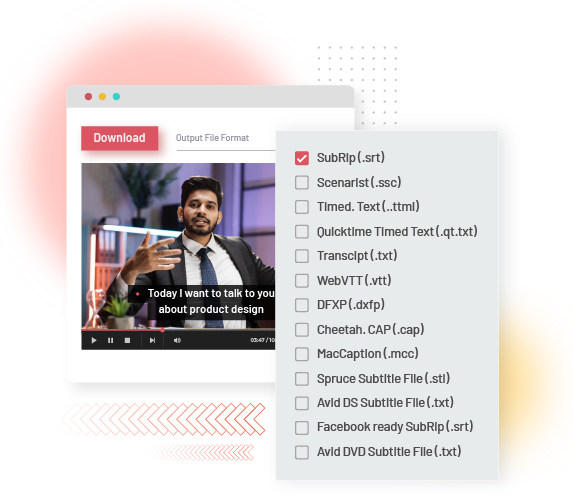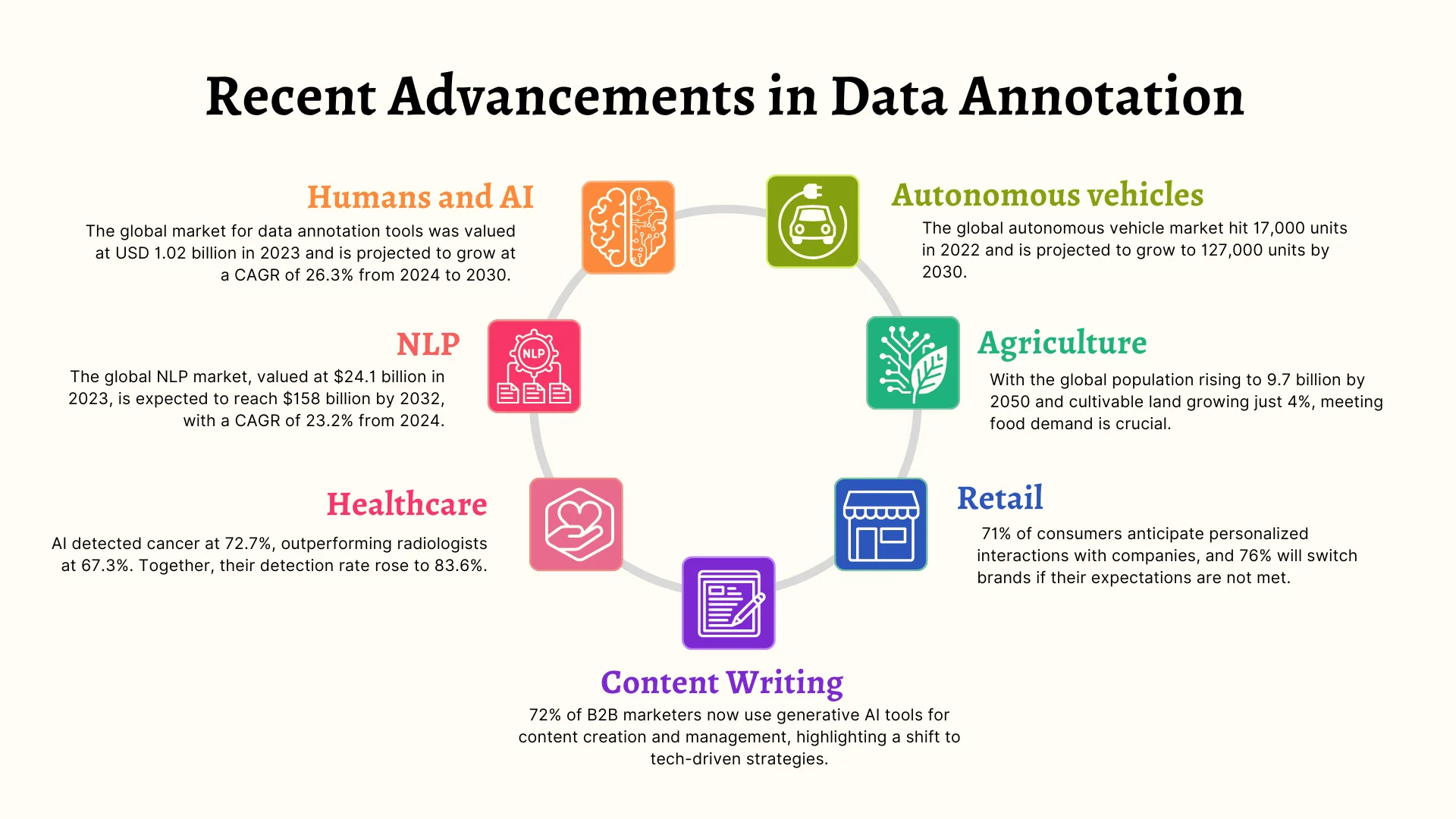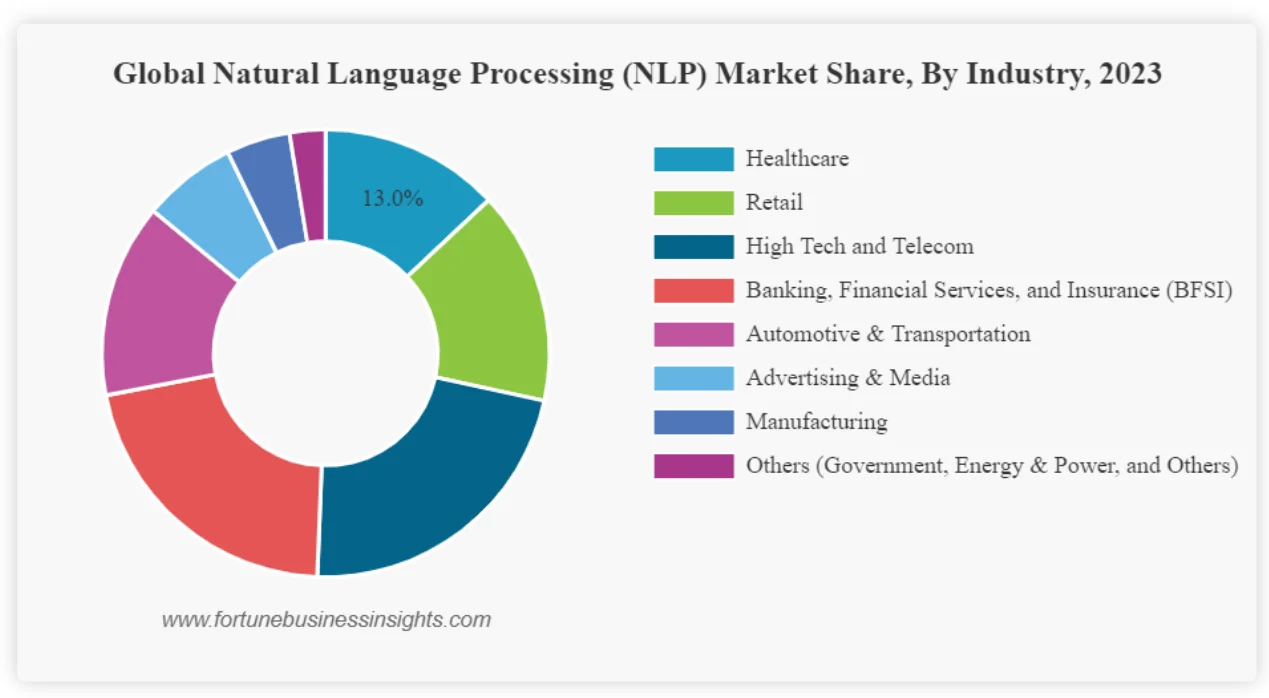

Have you ever marveled at how effortlessly your smartphone recognizes your face or how those savvy AI assistants always seem to understand you perfectly? Get ready because we’re about to dive into the captivating world of data annotation – the hidden powerhouse fueling the AI revolution.
Let’s say you're teaching a toddler to identify animals. You'd point to a picture and say, "This is a dog," right? Data annotation is kind of like that but for machines. It's the process of labeling data so that computers can understand and learn from it.
Here is another example. Have you ever played a game where you had to sort items into different categories? That's basically what data annotators do, but on a much larger scale and for all sorts of data – images, text, audio, you name it!
Data annotation is the meticulous process of labeling and tagging data to train AI models, making them smart enough to understand and respond to our needs. Without data annotation, the AI technologies we rely on every day wouldn't be nearly as intelligent or effective.
As we zoom into 2024, data annotation is becoming the most wanted intelligence tool that makes our tech smarter, more helpful, and more human-like.
Experts predict that by 2027, the market for data annotation tools will hit $3.6 billion. That's a billion with a 'B'! It's growing by33.2% each year. This means smarter virtual assistants that understand your accent, self-driving cars that can tell the difference between a pedestrian and a street sign, Medical AI that can spot diseases in scans faster than human doctors, and whatnot!

In 2024, we're witnessing an exciting collaboration between humans and AI, similar to a superhero duo, but instead of battling villains, they're decoding vast amounts of data.
The global market for data annotation tools was valued at USD 1.02 billion in 2023 and is projected to grow at a CAGR of 26.3% from 2024 to 2030.
AI takes on the initial heavy lifting, while human annotators, equipped with AI training, step in to refine the details and add a human touch. The result? Faster, more accurate data annotation for companies worldwide.
Ever tried using a translation app and ended up saying something hilarious (or embarrassing) in another language? Well, those days are numbered, thanks to advances in natural language processing (NLP) powered by data annotation!
Annotators are hard at work labeling text data in multiple languages, helping AI understand context, tone, and even sarcasm. The results are pretty mind-blowing:

Thanks to carefully annotated medical images, AI systems can now spot potential issues in X-rays, MRIs, and CT scans with incredible accuracy. A recent study showed that AI demonstrated a higher cancer detection rate(72.7%) compared to radiologists (67.3%). When combined with radiologists in a hypothetical team-up scenario, the detection rate increased to 83.6%. This implies that combining AI with human expertise could lead to even more accurate cancer detection. The AI might catch cases that radiologists miss and vice versa.
But it's not just about spotting diseases. Annotated health data is also helping to:
Self-driving cars know a stop sign from a yield sign. They can tell the difference between a pedestrian and a street lamp. But how is it possible? Teams of annotators are working tirelessly to label millions of images and video frames, teaching these vehicles to maneuver our complex world. And it's paying off big time.
Autonomous vehicles rely on a combination of cameras, LiDAR, radar, and other sensors to perceive their surroundings. Data annotation helps these sensors interpret objects, road signs, lane markings, pedestrians, and other critical elements in real time. Annotated data helps AI models learn to predict and react to dynamic scenarios, such as sudden lane changes, unexpected obstacles, or varying weather conditions.
Next Move Strategy Consulting reports that the global autonomous vehicle market reached nearly 17,000 units in 2022. It is expected to expand significantly, with projections indicating it will grow to approximately 127,000 units by 2030.
With the global population set to rise from 7.5 billion to 9.7 billion by 2050 and cultivable land increasing by only 4%, meeting the growing food demand is mandatory.
Properly annotated data enables more accurate and actionable insights, ensuring that technological advancements can efficiently address the challenges of feeding a larger population with limited land.
It also enhances SEO content for your website, boosting the ranking potential of your pages. Here’s how to effectively use internal linking:
Ever wish you had a personal stylist or a mind-reading shopping assistant? Well, with data annotation, we're getting pretty close! Data annotation plays a crucial role in enhancing AI-driven shopping experiences through AI in retail stores.
Today, 71% of consumers anticipate personalized interactions with companies, and 76% will switch brands if their expectations are not met. Consequently, retailers are prioritizing the personalization of the entire customer journey.
How can data annotation enhance personalization in retail for both customers and store owners?
Data annotation is shaking up the world of content writing in different ways. By annotating vast amounts of text data, AI is taught the art of engaging writing.
But AI isn't here to steal the job of humans. Instead, it's becoming the ultimate collaborative partner. In fact, a recent survey by Forbes found that, 72% of B2B marketers now use generative AI (Gen AI) tools for content creation and management, reflecting a shift toward technology-driven content strategies.
Want to achieve similar success in content creation? By integrating AI with your content strategy, companies like Lexiconn are showing how you can harness technology to improve the engagement and reach of your content.
A McKinsey article, "The Future of Personalization," reveals that personalized marketing can cut customer acquisition costs by up to 50%, raise revenues by 5% to 15%, and improve marketing ROI by 10% to 30%. Data annotation helps in marketing by:

As machine learning (ML) continues to evolve, the demand for more complex and detailed datasets is growing. High-level ML models require precise data annotation to ensure effective training. This growing complexity highlights the increasing need for expert data labeling services, as the accuracy and quality of annotations directly impact the performance of ML models.
The importance of real-time data annotation is also becoming more pronounced as data collection processes evolve. Annotators must work more quickly and accurately, ensuring data is labeled correctly during the collection phase. Errors at this stage can significantly impact the outcomes of model training, making precision and efficiency critical.
Real-time data annotation is gaining traction, especially in industries like autonomous driving, where timely and accurate data is crucial.
Automated data annotation enhances the efficiency of the data labeling process and maximizes the potential of machine learning and artificial intelligence applications, making it an essential tool in today's data-driven ecosystem.
Automation is increasingly integral to data labeling, particularly for handling large datasets. Algorithms designed for automatic data labeling can manage vast volumes of data, speeding up the process and making it more scalable. However, automation isn't foolproof; human oversight remains essential to maintain accuracy and address errors that automation may miss.
By 2024, automated labeling is expected to complement, rather than replace, traditional human-based labeling methods. The global data collection and labeling industry is projected to achieve a revenue of approximately USD 17.1 billion by 2030.
The explosion of digital content across various platforms is another key factor driving the demand for annotated data. Businesses are now handling vast amounts of user data from multiple digital channels. Effective data annotation enables companies to maximize their online content's potential, delivering value to users and attracting new customers.
The total volume of data generated, captured, copied, and consumed globally reached 64.2 zettabytes in 2020. This figure is expected to grow rapidly, with projections indicating that global data creation will exceed 180 zettabytes by 2025.
Generative AI (GenAI) is poised to significantly impact the data labeling industry. First, it will drive the demand for annotated data, as more sophisticated AI models require well-labeled datasets for AI training. Second, GenAI can serve as a tool to automate or partially automate the data labeling process, potentially increasing efficiency while still relying on human input for quality assurance.
The Generative AI market is projected to reach a size of USD 36.06 billion in 2024. It is expected to experience a robust compound annual growth rate (CAGR) of 46.47% from 2024 to 2030, leading to a market volume of approximately USD 356.10 billion by 2030.
As we look ahead, the future of data annotation is shaping up to be pretty exciting. We're moving towards a world where AI and human smarts work hand in hand, breaking down language barriers and creating tech that truly gets us.
So, what do you think? Whatever your thoughts, one thing's for sure – the future is looking bright, and it's all thanks to the power of labeled data!
Looking to enhance your content strategy with advanced AI tools? At Lexiconn, we specialize in integrating AI-driven solutions to improve your writing and SEO efforts. We optimize content with top-ranking keywords to generate customized content.
Interested in seeing the results? Visit lexiconn.in today and start your pilot project!



I have read and accept the Privacy Policy
Read More